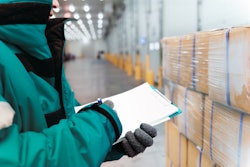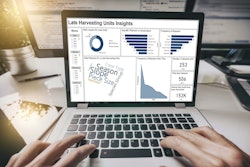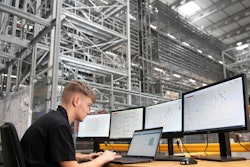
During the last several decades, enterprise resource planning (ERP) systems and radio frequency identification (RFID) tags have revolutionized the efficiency of supply chain management. However, as impressive as these advancements are, companies still need human eyes to oversee critical parts of the supply chain process.
Interestingly, this “human eye requirement” in supply chain management is on the verge of being optimized. Sitting at the crossroads of the “human-like” and the digital, visual artificial intelligence (AI) solutions offer another set of “digital eyes” (in addition to those of human workers). When leveraging visual AI technology to address specific challenges in supply chain management, computer vision can accomplish key tasks more accurately than relying on human eyes alone, and that’s why enterprises across nearly every industry are currently investigating ways to incorporate computer vision into their supply chain workflows.
Here’s how computer vision is improving the efficiency of supply chain management in warehouse organization and retail shelf management.
How computer vision works
The most advanced computer vision systems work by training an AI model with images, then deploying the AI models to on-site edge devices that receive and interpret visual data from local cameras.
Developers create and deploy these visual AI models via the following steps:
- Collection of visual data. The first step involves the collection images or video clips that pertain to the use case. This might include images of labeled boxes on pallets, or images of ripe and healthy vegetables vs. images of unhealthy, bruised or spoiled vegetables.
- Annotation of visual data. This step involves the annotation, labeling or defining of the visual data. By going through the images and annotating which boxes are which – or by identifying which vegetables are damaged – AI developers can prepare the data that is necessary to train the AI algorithms.
- Create AI models. Next, developers use the AI platform to generate the AI models. With this base information, the AI models learn how to recognize which boxes are which in a warehouse or they learn how to distinguish a damaged vegetable from a good one.
- Deploy AI models to edge devices. After creating, training and testing the AI models, developers deploy an “inference engine,” which contains the models to an “edge device” located on-site. An edge device is a local server at the facility where the visual AI system operates.
- Cameras feed images and video streams to the edge device. On-site monitoring cameras stream video to the edge device, where the AI model interprets (or inferences on) the data in milliseconds.
- Human operators receive the visual AI interpretations. Visual AI models can instantly identify bruised, rotten or damaged fruit with greater accuracy than human quality control inspectors, allowing factory workers to remove substandard products more efficiently. Visual AI models can also identify and count boxes on pallets to ensure that boxes stay within the view of the camera, allowing managers to prevent employee theft and other types of product loss.
Once created and deployed, a visual AI system can carry out tasks for a wide range of use cases like inventory tracking, retail shelf monitoring, quality control inspection and more. These systems can even monitor workers in factories, hospitals and construction sites to determine if they are using and wearing appropriate safety equipment.
Warehouse management
Warehouse management is one of the most obvious areas where computer vision can help overcome supply chain inefficiencies. After training an AI system with images of products, packaging and containers, the system knows “what is what” in the warehouse. It knows what goes into the warehouse, what comes out, where it is located and where it may have been moved. This prevents the common problem of losing a new shipment of goods by putting it in the wrong bay, where it could sit for a year or more and have the contents expire or become worthless.
Computer vision for warehouse management is especially valuable during the critical moments of loading and unloading trucks. Visual AI records what went into a truck at the beginning of a journey, what comes off the truck at the destination and what may have happened to the shipment anywhere in between. This holds human employees more accountable, prevents lost-in-transit issues and reduces instances of theft.
Finally, computer vision tracks warehouse items without RFID tags, which sidesteps the many disadvantages of RFID tags like lost tags, incorrectly assigned tags, broken or non-functioning tags and the cost of replacement tags.
Retail shelf restocking and organization
Visit any brick-and-mortar retail store and you’ll notice that there is room for improvement in the way they keep shelves and displays stocked and organized. If you’ve ever worked in one of these stores, you also know that the job of organizing and stocking merchandise is fraught with inefficiencies.
Traditionally, managers and store workers monitor the status of shelves to determine where and how they need restocking and organizing. But, humans invariably make mistakes. For example, they might not follow the assigned guidelines for product placement, or managers might not notice when employees are ignoring or forgetting the guidelines. Alternatively, workers could be so busy organizing and restocking one area of the store that they neglect areas that need even more attention.
Visual AI can offer considerable help in these areas. Developers can train a visual AI strategy with images of products and shelf organization strategies. Then, software operators can assign products to different shelves and displays within a store. By monitoring store shelves and displays round the clock, a visual AI system provides just the kind of help that human retail workers need to keep everything in order. The computer vision systems alert employees about shelves and displays that need attention. This helps employees address the most problematic shelf and display issues first and it holds team members more accountable for product display and shelf restocking issues.
Final thoughts
Visual AI strategies offer a more “human-like” approach to overcoming supply chain management challenges, mainly because they complete visual tasks that would normally require human workers. Even better, these computer vision systems can accomplish visual tasks with greater accuracy and cost-efficiency than human workers can.



















